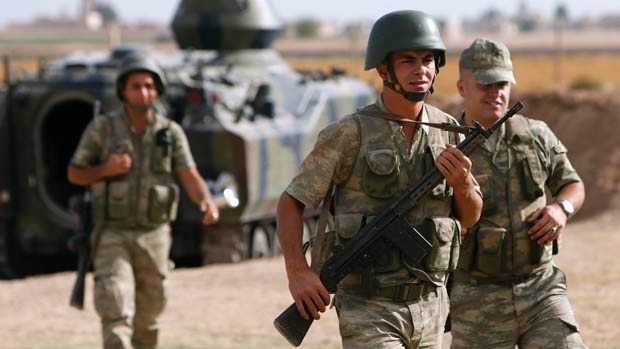The Islamic State in Iraq and Syria (ISIS) captured the world’s attention in the early 2010s through its remarkable coordination, unprecedented brutality and rapid territorial gains. By June 2014, at the height of their power, ISIS forces captured Mosul – Iraq’s second largest city. Days later, Abu Bakr al-Baghdadi, the now-deceased leader of the group, appeared in public for the first time in years, urging foreign fighters to travel to the region and help fight for the establishment of an Islamic state or “caliphate” across the Middle East and beyond.
By the end of the year, ISIS had attracted an estimated 41,000 recruits from 80 countries. The group controlled extensive territory in Syria and Iraq, implementing the most extreme form of Sharia law and committing atrocities including enslaving minorities, brutally executing foreign nationals, and coordinating deadly terrorist attacks across the world.
In Canada, hearing the word ‘ISIS’ evokes recollections of news footage depicting men pledging allegiance to Daesh before carrying out unthinkable violence. Other broadcasts showed heavily armed militants cheering from tanks rolling through cities reduced to rubble, waving the group’s black flag. A common feature of these images is that they mainly depicted male militants. As a result, it is often overlooked that foreign women also traveled to Syria and Iraq to contribute to the group’s cause, posing a distinct and often-overlooked national security issue.
ISIS’ success in recruiting women was both unique and remarkable in terms of the actual number of women who joined, the geographical diversity of where they came from, and their different demographic backgrounds. It is estimated that about 13% of foreigners who traveled to Iraq and Syria to join ISIS were women. The demographic characteristics of those who traveled were mixed in terms of age, marital status and education level as well. There was a wide age range and a variety of marital statuses, with many women marrying or remarrying during their time with the group. A significant number of women had high school diplomas and some were college educated, suggesting no direct connection between recruitment and low education levels.
With ISIS largely defeated by the end of 2017, for the first time, we’re hearing from these women about why they left and where they are now. It is not clear exactly how many Canadian women left to join ISIS or how many may have since returned. However, at least 11 Canadian women who were part of the group are being held in Kurdish detention camps at Al-Hawl and Roj, with almost two dozen children. Those who have been interviewed have expressed regret over their decision. A common narrative is that these women traveled to the region obediently following a boyfriend or husband who wanted to join ISIS without understanding the political situation or consequences of doing so. The women interviewed are insistent they are not dangerous and want to live a quiet, normal life back in Canada. This narrative reinforces the common assumption that female travelers are passive victims of their male counterparts and leads to the belief that men pose a higher threat upon return to their home countries. Serious security implications can arise from not addressing this complacency.
Unfortunately, the current Liberal government has been relatively quiet on the subject. The stories of these women, labeled Canada’s ‘Jihadi Brides’, were covered heavily in early 2019, with the government quickly commenting that repatriation was not a priority. However, the federal government has yet to commit the necessary resources to assist in criminal justice proceedings and deradicalization programs for those who have returned – or for those who may return in the future.
If these women were to return to Canada, a UN report suggests that there should be gender-sensitive counterterrorism responses in place. Recognizing that there are many different roles that women can play in terrorist organizations – supporters, facilitators and perpetrators – is an important first step. Tailored prosecution, rehabilitation, and re-integration strategies should be developed as well. This is certainly not to suggest that these women avoid prosecution – even if they are found to have had a limited role in the organization. In fact, prosecution strategies should be more closely examined. Research suggestswomen who have been charged with terrorism tend to receive more lenient treatment in the criminal-justice system, based on often false gendered assumptions about women’s passive roles in violent conflicts. Decisions regarding the fate of these women need to be carefully weighed based on individual circumstances, as well as the context of each woman’s involvement – rather than based on commonly held gender stereotypes or the assumption of victimhood.
The radicalization process of these Canadian women is complex and an adequate government response is necessary whether or not the women are allowed to return to Canada. Imminent public safety is a concern and precedence should be established as a similar phenomenon is likely to occur in the future. More research has to be done to establish gender-specific policy responses that challenge underlying stereotypes and conventional narratives, ensuring justice, national security and human rights are prioritized.
Photo: Women walking alone (unknown), by Unknown via Upsplash
<p style=”line-height: 1.8; font-size: 17px; font-family: Philosopher; text-align: left;”><em>Disclaimer: Any views or opinions expressed in articles are solely those of the authors and do not necessarily represent the views of the NATO Association of Canada.</em></p>




